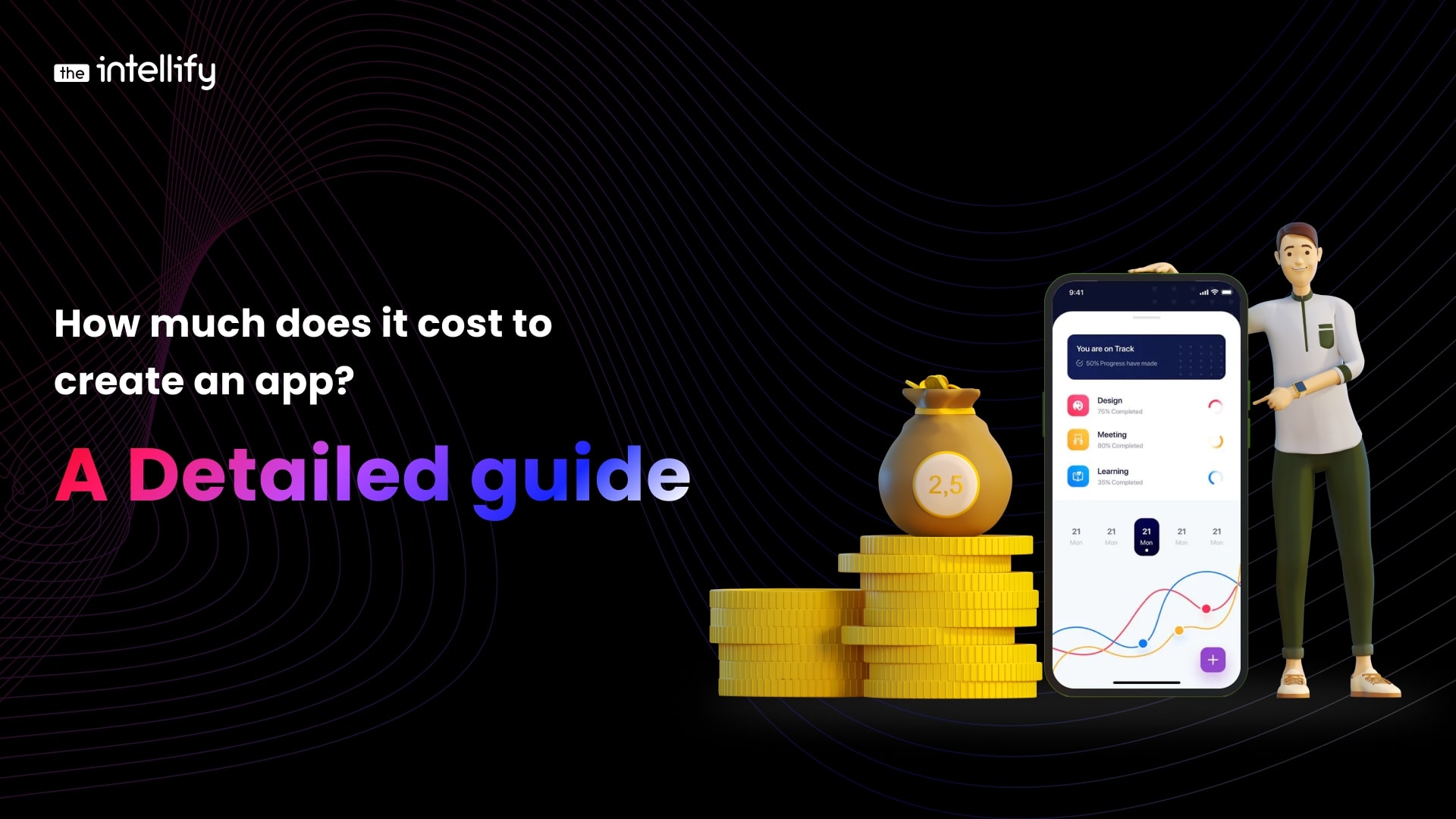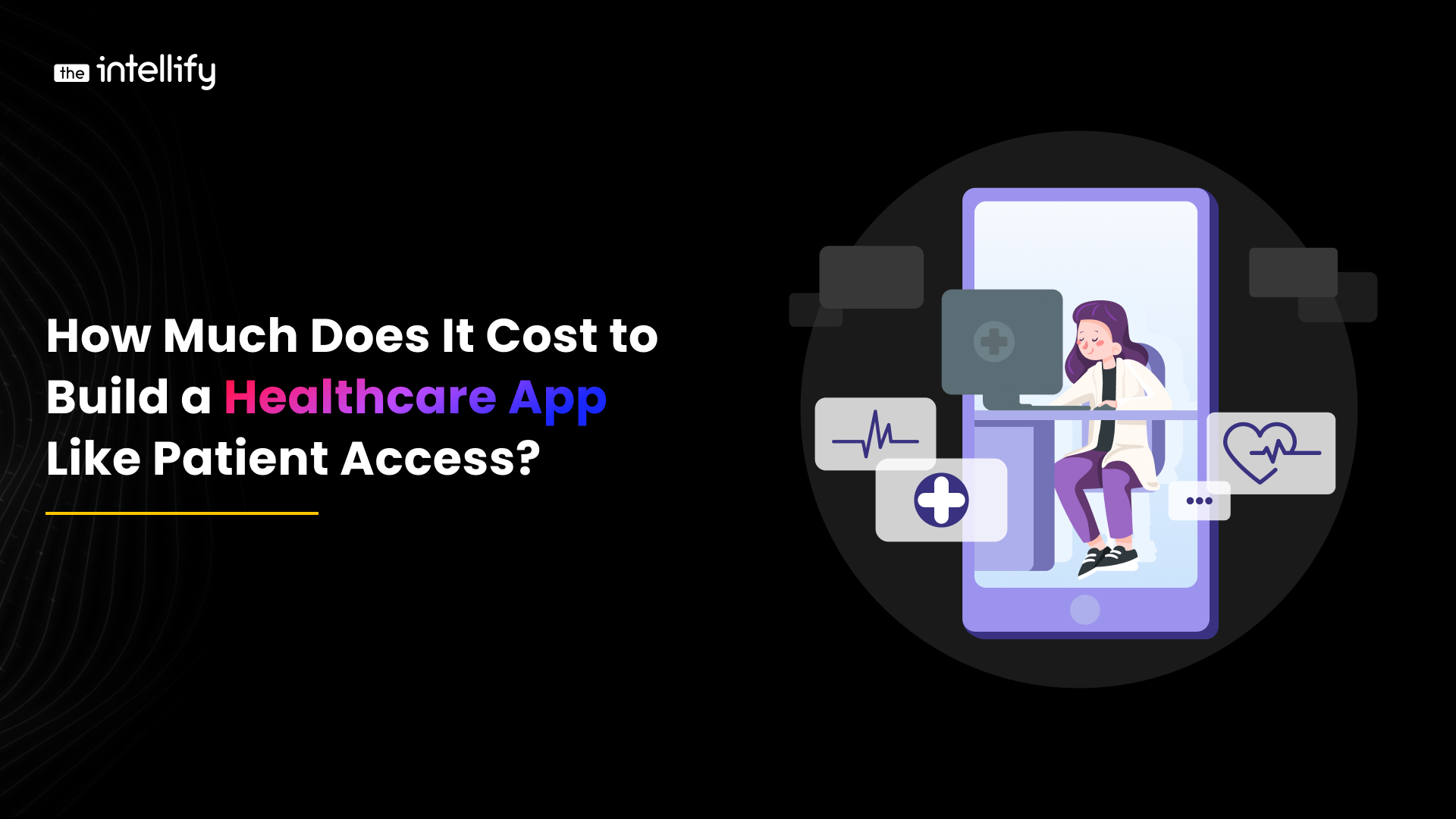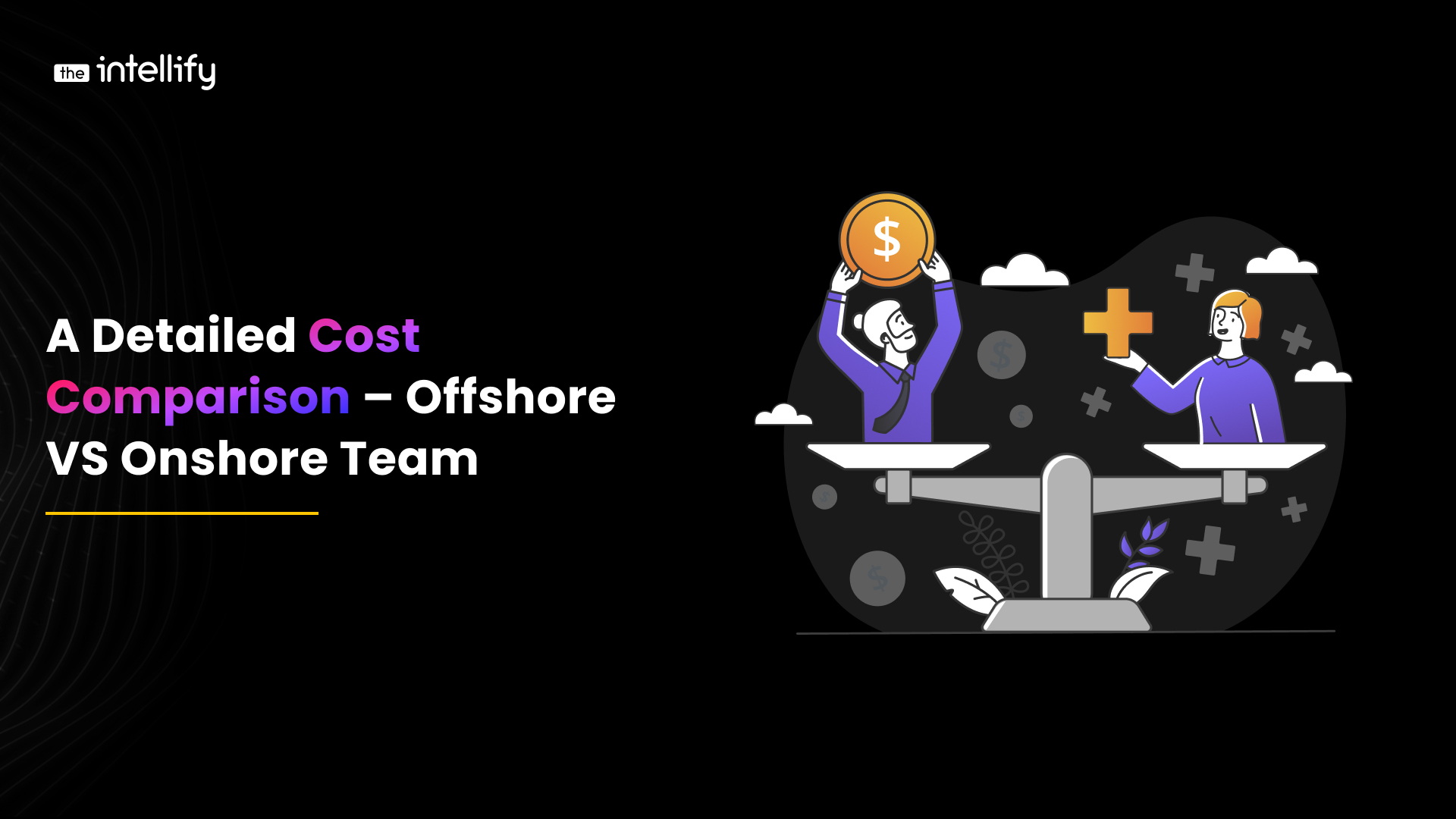How Much Does It Cost to Create an App in 2024? A Detailed Guide

By Jalaj Shah
April 12, 2024

In the ever-changing digital world of 2024, entrepreneurs and companies. It must have an extensive understanding of app development costs. The need for creative applications is at an all-time high due to the growing market for mobile applications.
Many aspects, such as the developer’s rates, the complexity of the app, and the design needs. And the platform chosen affect the total cost of app development in 2024. The usual cost of making an app can use as a guide, but the final price will depend on the demands and goals of each project. Statista’s Digital Market Outlook states that the mobile app industry will generate—over $613 billion in sales by 2025 due to growth in many sectors.
This detailed guide explores the aspects impacting app development costs in the ever-changing tech industry in 2024 and gives expected costs based on these elements.
Seven Important Stages of a Successful Custom App Development

Several essential steps in developing a successful app for your company such as:
Learn About the Target Market
Learn about the target market to understand customer behaviour and market dynamics. And the top competitors. Read the reviews of popular applications to learn how to make a better product.
Select the Appropriate Platform
Consider your budget and target audience when deciding whether your app will be compatible with Android, iOS, or both platforms. Starting with one platform and adding others later may be more cost-effective.
Work with a Professional App Development Company
When you partner with a respectable app development business, you have access to talented individuals such as app developers and UI/UX designers. And project managers as they have extensive knowledge in the field. And use cutting-edge technology to realize their ideas.
Build MVP Mobile App
Develop a Minimal Viable Product (MVP) to see how well your app idea works before you invest.
Test your app
Test your app across performance, user experience, and content to ensure it is bug-free. Thorough testing can also enhance your app’s reputation. And reduce the time and money spent on development.
Submit App to Stores
Once testing is over, kindly submit your application to either the App Store or the Google Play Store.
Launch and Monitor
Once your app launch, monitor its performance using the in-app analytics tools. Track user activity and roll out updates to boost features. And tool suggestions to improve performance.
Top 8 Things That Determine How Much It Costs to Make a Mobile App

The total cost of creating a mobile app depends on several important elements. To maximize your return on investment (ROI) from your development,
Complexity of Mobile Apps
One important aspect that determines the development cost of a mobile app is its complexity. Every app has unique features and functions, which may be as basic or advanced as the developer sees fit.
Simple Apps
- Simple dashboards, user profiles, and login systems are some of the fundamental features of these apps.
- Cost: $5,000 to $25,000.
- Examples: Simple games and utility apps
Medium Complex Apps
- Social network integration, payment gateways, and multimedia streaming are a few more services. These applications provide to increase user engagement and profitability.
- Cost: $25,000 to $75,000.
- Example: social media apps and e-commerce platforms.
Advanced Apps
- Apps like this use cutting-edge tech, such as augmented and virtual reality, artificial intelligence, and machine learning; they also include features like support for several languages and complicated data logic.
- Total cost: $75,000 to $300,000 or more.
- Examples: Complex game apps and business solutions
App Category (Type of Mobile App)
The cost of designing your mobile app depends on its category. The development expenses of different types of apps determine their complexity, functionality, and security measures.
E-commerce Apps
- Apps like Wayfair and Amazon can process real-time transactions, accommodate millions of users, and provide strong security.
- Cost: $50,000 to $150,000.
- Examples: Platforms like “Edamama” for moms and Adidas’ worldwide e-commerce app
Social Networking Apps
- Social networking applications must support hardware features. Such as cameras and audio recorders, and interact with third-party services. They must also be very scalable to handle millions of users.
- Cost: $50,000 to $300,000.
- Example: “Vyrb” and similar voice-assistant social networking apps.
On-demand Apps
- Even in its most basic forms, on-demand applications have several variants. That caters to different types of customers, service providers, and organizations.
- Cost: Depends on application complexity and size.
- Example: Acti Drive aims to make driving easier.
Hardware-dependent Apps
- About data extraction and action execution, IoT-based apps depend on hardware devices.
- Cost: Depends on the complexity and level of hardware integration.
- Example: An eScooter app called “Moo” that manages transportation on a micro-level.
Animation and App Design
Your app’s design is crucial for attracting and keeping users. You usually have two design choices: Custom and Standard UI. A Custom UI is more expensive but provides a unique user experience.
Elements like wireframing and animation are fundamental to app design. At the same time, animation adds a touch of style and ease of use. Wireframing establishes the basis for successful user experience elements.
Let’s Have a Look at all the Costs Linked to App Design
- App Research: Market research, competition analysis. And trend assessments are all part of an app design study, which may cost anywhere from $100 to $350.
- User experience design (UX Design): This phase involves rough drawings and wireframes, which cost between $2,000 and $8,000.
- User Interface Design: For user interface design (visuals), you may expect to spend anywhere from $10,000 to $40,000. This amount will include the creation of mood boards, examples of user interface mockups, and final, app-specific mockups.
- Branding: Logos, symbols, and social media assets are all part of a brand’s identity. And may cost anywhere from $5,000 to $20,000.
- Illustrations and animations: This service, which may cost anywhere from $1,000 to $20,000, entails using animation to conceptualize the necessary engagement with on-screen material and user interactions.
These expenses affect the intricacy of the work and the amount of animation needed to ensure. That your app stands out and captivates users from the start.
Mobile App Features and Functions
The functions and features an app offers affect its development cost. Development costs rise in direct proportion to the number of features added. To launch your software more and gain useful user input. It’s recommended that essential functionalities concentrate first. And adopt an MVP (Minimum Viable Product) strategy.
Basic and advanced feature development times and costs break down as follows:
Basic Features
- Login: It has social media, email, lost password, and logout options. It costs $500 to $1,000 and takes 30 to 42 hours to complete.
- Messaging: Status updates on messages include whether the sender is online. Whether the recipient has seen the message and whether the recipient is typing. This requires about 170–180 hours of work and a price tag of $3,000– $5,000.
- Push Notifications: Reminding and informing users via the use of push notifications. It costs $1,000 to $1,200 and takes around 25 to 32 hours.
Advanced Functions
- Payments: The payment section allows users to see past transactions and current amounts and add debit. And credit cards, and connect to third-party payment processors like Paytm and PayPal. Approximately $2,500 to $3,000 and 60 to 78 hours of work is required.
- Maps: determining the user’s current position and allowing them to choose their desired pickup and drop-off locations. It costs $3,000 to $4,000 and takes about 100 to 120 hours.
- Calls: Contains audio calls, contact information, and video calls. It will cost about $14,000 to $15,000 and take around 300 to 400 hours.
Mobile App Platforms

Your chosen platform determines your mobile app’s development cost and reach. The typical expenses of the most popular app development platforms are as follows:
Android and iOS native apps
- Android applications created using Kotlin or Java. While iOS apps creates using Swift or Objective-C.
- Cost: $50,000 to $100,000 on average.
- Native applications provide superior performance and access to device-specific functionality.
Multi-Platform Apps
- Built utilizing cross-platform technologies such as React Native and Flutter for iOS and Android.
- Costs: Range from $25,000 to $60,000.
- Cross-platform programs provide code reusability, which reduces development costs and time.
Web Apps
- Software that runs on the web, including progressive web apps (PWAs).
- Price range: $15,000 to $50,000 on average.
- Web-based applications are cheap and accessible.
Hybrid Apps
- This hybrid app runs in a web view component but looks and feels like a native app when downloaded.
- Costs: May range from $10,000 to $150,000.
- Hybrid applications have native and web app advantages
Reusing Code- Mobile App Clone
Reusing code may cut the expense of creating an app in half. Adapting existing code from another program to your requirements may save time and money. Yet, to keep your brand’s personality intact, you should only reuse used components. Such as login screens or contact forms.
The development cost is usually 20-30% lower when existing code reuse rather than written from the ground up. With this method, app developers may save money without sacrificing customization or flexibility.
App Development Team Size and Location
The cost of your mobile app is impacted by the developer you choose. You may work with an experienced app development company, as a regional group, as an in-house staff member, or as a freelancer. Yet, if you want your app to have top-notch features and functions. You must hire a professional Mobile App Development Company like The Intellify.
A development team may be expensive, yet, below is an approximate breakdown of the costs:
Cost Factors
- Simple App: A simple app may take two to six months to develop and can cost around $5000 to $25,000.
- Medium App: The average cost to develop a medium-sized app is between 25,000 and $50,000, which takes six to nine months.
- Complex App: A complex app may take nine to fifteen months to develop. And the associated expenses can start at $750,000 and go up from there.
Project managers, QA experts, business analysts, developers, DevOps. And solution architects are common development team members.
Developers’ Location: (Hourly Rates of App Development By Location)
Another factor that affects the total cost of developing an app is the location of your development team. Various areas’ typical hourly rates compare here:
- India: $20–$40/hr
- United States: $80–170/hr
- Australia: $80-$200/hr
- Russia: $60–$150/hr
App Maintenance & Support
Regular app maintenance is key to maximizing performance and keeping your app up-to-date. What follows app development that consumes your budget?
- Fixing Bugs: App bug fixes include fixing bugs and other problems after launching the app. To ensure the app is working, it is important to check it often and update it as needed.
- Design Changes: These include altering user interface components. And functionality to match evolving trends and user preferences, keeping app designs attractive. And current and retaining user engagement.
Hidden Costs in Creating an App
Creating an app from scratch may be a complicated and resource-intensive task. The most clear expenses are those associated with the initial investment in an app’s development. But there are also ongoing, less visible expenditures, such as:
- User Experience and Design
A lot of design effort goes into making an app that appears attractive and is simple to use. It includes making visuals and icons and planning the user interface. Employing a professional designer might cause these design expenses to skyrocket.
- Debugging and Testing
After the app’s development is complete, it must test to ensure it performs as intended. This may take a long time and include testing on many different platforms and devices. The typical cost of app development might also rise if problems need resolving.
- Update and Maintenance
For apps to continue functioning and remain up with the newest technology. They need regular maintenance and upgrades. From addressing issues to introducing brand-new features, this may include everything. Application maintenance might be expensive. But it’s worth it to keep your product up-to-date and competitive.
- Fees for App Stores
Every download from an app shop, such as the Apple App Store or the Google Play Store, will cost you money. The platform and pricing plan you choose will determine the exact amount of these costs.
- Advertising
Marketing and promotion are essential if you want people to see and download your app advertisements, promotions, and building a website. Social media accounts are part of this.
How to Reduce Mobile App Development Costs?
Companies must find ways to reduce app development expenses. If they want to build successful apps without going bankrupt. To help you save money, here are six easy ways:
- Decide on a Platform
Give top priority to the platform that meets the demands of your intended customers. And your project, by creating a cross-platform app utilizing frameworks like React Native or Flutter. You may save time and money while increasing your app’s reach.
- Adopt a Simplified Design
While an appealing design is essential, adding unnecessary complexity may increase project expenses. Focus on a simple, minimalist layout that satisfies user requirements. For design options, use pre-made templates or use skilled designers.
- Use Third-Party APIs
Think about using third-party APIs or services instead of building unique functionality from the ground up. Also, having powerful features may help you save time and money. Be sure the solutions you choose will work for you and provide continuous help.
- Optimize For Scalability
Make sure your app can handle growth with ease. You may save money by avoiding expensive rewrites as your app develops using scalable technologies. And infrastructure, such as cloud-based solutions.
- Join Hands With an Experienced Team
Work with skilled developers who can save you money without affecting quality. Consider a development company for comprehensive services. And seek a team with a record of completed projects within your budget.
- Make a Strategy for Upgrades and Maintenance
From the beginning, consider the need for regular upgrades and maintenance. Use a modular development strategy. That lets you change features one by one without having to rewrite the program completely. Consider bringing in-house experts or teaming up with The Intellify to provide affordable, continuous help.
- Consider Your Revenue Generation
Revenue-generating options must consider to reduce app development expenses. Your decision about how your app will earn money may impact your development plan. This may be via advertisements, in-app purchases, subscriptions, or a premium model.
- In-house vs. Outsourcing
Analyze the benefits and drawbacks of in-house development. And outsourcing before making a final decision. While developing in-house allows for more direct supervision.Teamwork and outsourcing may save money, particularly in areas where developers charge less per hour.
- Use Agile Development Methodologies
By breaking down the app’s development into short, iterative processes. The average cost of app creation can be kept low.
Approaches for Determining the Mobile App Development Cost
The two most common methods of payment used by app developers are:
- Fixed-Charge Method: The fixed-charge method is best suited for smaller projects with a clear scope of work and a tight deadline. The key benefit of this calculating approach is the clarity of app development costs. A final price is known before development begins, so there’s no need to worry about how much it costs to build an app.
- Time and Material Method: Unlike the first method, time and material pricing allows for more leeway. It is used in large-scale projects that are prone to sudden changes. Hourly rates and total development time often determine the final pricing.
Conclusion
There are a lot of elements that affect how much it will cost to build a mobile app in 2024. A successful app that balances quality and cost-effectiveness may be created without breaking the bank with smart planning, prioritization, and an emphasis on future-proofing. Always remember that creating an app is half the battle. The other half is designing an experience that always stays with your users. If you are looking for an experienced Mobile App Development Team, Consider The Intellify As Your Prime Choice with the appropriate approach. And app development partner companies can navigate this challenging landscape.

Written By, Jalaj Shah
The COO and Co-Founder of The Intellify. Jalaj enjoys experimenting with new strategies. His posts are fantastic for businesses seeking innovative development ideas. Discover practical insights from his engaging content.


How Much Does It Cost to Build a Healthcare App Like Patient Access?
Costs of Developing Healthcare Apps In the quickly changing landscape of digital healthcare, patient-centric apps like Patient Access have emerged as critical tools for improving patient care and expediting medical procedures. These apps let users arrange appointments, access their medical information, manage medications, and contact healthcare providers from the comfort of their own homes. The […]


A Detailed Cost Comparison Offshore VS Onshore Teams
Detailed Cost Comparison Offshore VS Onshore Teams The world is always changing due to globalization. The choice between offshore vs onshore outsourcing teams is crucial for companies. Thanks to globalization, which erases boundaries. Organizations can depend on a vast talent pool worldwide. This has led to offshore outsourcing. In it, a team from another country, […]


How Much Does It Cost to Build a Marketplace App Like Gumtree?
Detail Guide About Digital Marketplace like Gumtree The world is shifting online. Marketplace apps have emerged as major contenders. They bring buyers and sellers closer than ever. These platforms have cut the method of buying and selling. They have also fostered the market for both people and companies. Of all the marketplace apps, Gumtree is […]


How Much Does It Cost to Build a Healthcare App Like Patient Access?
Costs of Developing Healthcare Apps In the quickly changing landscape of digital healthcare, patient-centric apps like Patient Access have emerged as critical tools for improving patient care and expediting medical procedures. These apps let users arrange appointments, access their medical information, manage medications, and contact healthcare providers from the comfort of their own homes. The […]


A Detailed Cost Comparison Offshore VS Onshore Teams
Detailed Cost Comparison Offshore VS Onshore Teams The world is always changing due to globalization. The choice between offshore vs onshore outsourcing teams is crucial for companies. Thanks to globalization, which erases boundaries. Organizations can depend on a vast talent pool worldwide. This has led to offshore outsourcing. In it, a team from another country, […]


Real Estate Mobile App Development 101: All You Need to Know
Today, the real estate industry is improving with the help of new technology. Mobile applications are one of the major aspects of this shift. Real estate mobile app development has become crucial for such businesses, which must remain relevant. The applications benefit buyers, sellers, agents, and property managers. In the contemporary world, individuals desire convenience […]

0
+0
+0
+0
+
Committed Delivery Leads To Client Satisfaction
Client Testimonials that keep our expert's spirits highly motivated to deliver extraordinary solutions.

Let’s start a Conversation about your Business Goals!
Drop us a line to Start a Project with us
Contacts For Business
Contacts For Career













